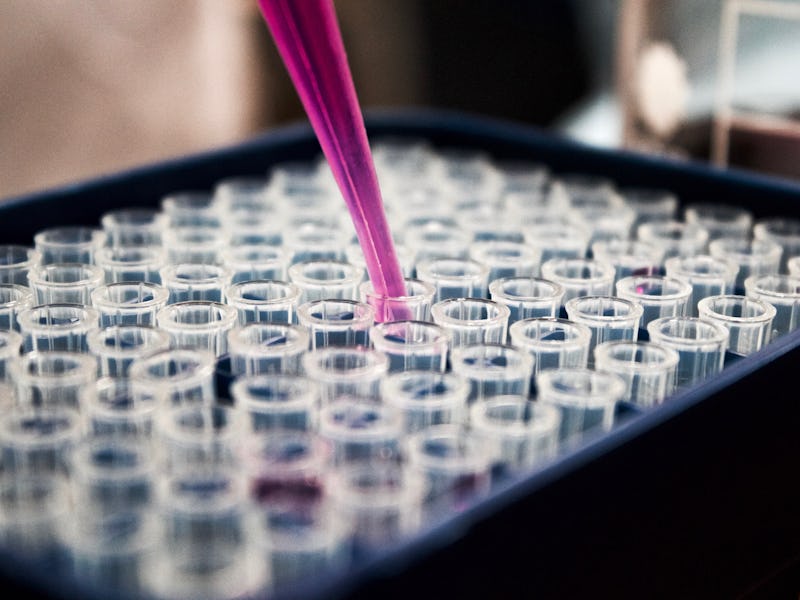Innovation and Disruption Get Less Likely With a Bigger Team, Study Finds
Big teams leads to less disruptiveness overall.

One silver lining of having an apartment so small you can feel your stomach brush the wall with a particularly strong exhale is that you don’t have to feel bad not helping whomever is cooking dinner or doing the dishes. Fitting two people into the foot-and-a-half wide corridor that houses our fridge, oven, microwave, and sink is simply a non-starter. It’s frustrating at times, but it has helped instill a natural division of labor — whoever cooks does not touch the dishes — that I don’t think would have occurred otherwise, and it muted the well-intentioned, but not always constructive, instinct to help a busy cook who’s in the zone and doesn’t want to be bothered with finding you a vegetable to peel or something.
This is an adapted version of our weekly Strategy newsletter, which offers reporting and insight on your career, life, and finances. Sign up for free here.
In short, it’s helped me appreciate the wisdom of the old saying, “too many cooks in the kitchen,” an aphorism about team dynamics and collaboration that was recently validated by a new analysis of more than 65 million patents and projects from researchers at the University of Chicago. The more people involved in a project, the researchers found, the less likely it is to result in findings that are disruptive or innovative.
The expression "too many cooks" might have implications in fields like scientific and technological research.
The way we organize ourselves into groups has a big impact on the kind of ideas we come up with and put forward. Advertising agencies, in particular, are an interesting place to see this dynamic at work, because they are in the precarious position of having to market their own creativity. The fuzzy distinction between what’s really the best environment to complete creative work — and what Brad, a mid-sized retailer’s regional VP of marketing, thinks a creative person needs to do their best work — can sometimes be vast. I love this New Yorker story from 2014 about an advertising agency called Barbarian that spent $300,000 on “superdesk” — “4,400 square feet of undulating, unbroken awesomeness to keep people and ideas flowing” — to serve as a workstation for all of its 120 or so New York City employees.
Superdesk lasted about two years: It was spotted for sale on Craigslist in 2016.
The notion that you can have too many cooks in the kitchen also applies to the realm of science and technological discovery, according to a new study from researchers at the University of Chicago’s Knowledge Lab. Their new paper was published last week in the journal Nature.
Lead author James Evans, a sociology professor and the Knowledge Lab’s director, tells Inverse that it doesn’t really matter what kind of work you’re involved in: bigger teams, and bigger entities, are naturally more conservative. We might call this the “Transformers Effect.”
“Large teams are expensive,” Evans explains. “In a big production studio, if they ask themselves, ‘Do we produce Transformers 9 or Slumdog Millionaire?’ … They’re going to go with Transformers 9.”
In other words, when you put together a big team, you spend a lot more money, which leads to higher expectations about what that team has to accomplish to justify all that cheddar. That, by extension, leads to safer bets. It doesn’t really matter what kind of work they’re doing, either. Evans’ team examined about 60 years’ worth of data for a total of roughly 65 million patents, papers, and pieces of software pulled off GitHub.
Scientific funding, a new study argues, should embrace more entrepreneurial risk-taking.
Each project was assessed computationally. (For example, by looking at how many times it went on to be cited.) What the team found was that, with each new team member, the likelihood of a disruptive innovation declined. The difference got smaller as the team in question got bigger (i.e. there’s a bigger difference between a team of two and a team of four than there is between a 98-person team and one with 100). In addition to the burden of higher expectations, larger teams are also more susceptible to a problem organizational psychologists call collaborative interference.
“I’ve written review papers with 10, 12, 14 people, and an interesting idea I had got killed by someone else, and I probably killed some of their ideas because they were unrealistic,” he says. More people to shoot down your ideas leads to fewer risks.
So, you may be wondering, does this mean we should begin locking all the smart people up into solitary confinement until they unleash their brilliance on the world? Not exactly. There is value in “conservative” science, as Evans put it, namely that it’s necessary for refining existing ideas, like the winners of 2017’s Nobel Prize in Physics, who got the honor for proving definitively a 100-year-old theory of Albert Einstein’s.
The “2017 Physics Nobel was an enormous feat of engineering science, but it was also the most conservative experiment in history,” he explains. “I’m not saying that science is bad; it’ll exploit the hunches from the past. But it’s not going to generate new hunches.”
So what can we take from all this? Evans says more granting agencies should adopt models like the Bill & Melinda Gates Foundation, which exists to fund high-risk bets. The venture capitalist’s mentality — I make 100 bets, 99 of which fail but one of which pays big — is also something that other entities that fund research should consider. “There’s no question that it’s better for encouraging risk and innovation,” Evans says.